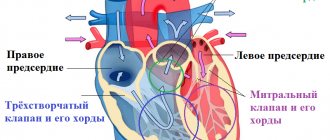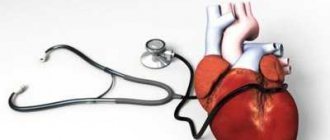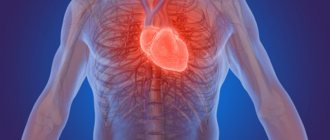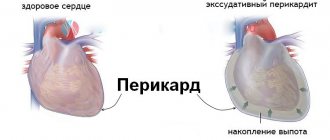The heart is the main human organ. Cardiomegaly, or its increased size, is a dangerous manifestation that affects not only the cardiovascular system, but also some other organs. Symptoms of the disease can be varied. Sometimes there are signs of muscle pathology, and the stomach may even hurt for a long time. A person does not immediately realize possible health problems. What are the causes of enlargement of the right ventricle of the heart? Our article is devoted to this topic.
Let's try to understand the causes, clinical picture and consequences of the disease, consider how diagnosis is carried out and therapy is carried out.
Features of the disease
What is heart enlargement? This is a special disease that affects both adults and children. Before finding out the causes and symptoms of the disease, it is worth considering its essence in detail. A large heart is a disease that has a corresponding name in medicine. Enlargement of this organ is called cardiomegaly.
The occurrence of the disease is closely related to the expansion and enlargement of the ventricles. In addition, an enhanced neoplastic process occurs in them, and metabolic products accumulate in the heart. This leads to the development of cardiomegaly. A person is unaware of his own condition for a long time, so he continues to live as before. However, this is extremely dangerous if nothing is done and no measures are taken, as undesirable consequences arise that threaten the lives of both the child and the adult.
Often the large left or right ventricle enlarges in a completely healthy person. The cause may be pregnancy in women. This is due to the resources that the body spends on the development of the fetus in the womb. Cardiomegaly is a common companion for athletes. Instrumental diagnostics and x-rays will help determine the exact causes of an enlarged heart.
The size of the human heart fluctuates within certain limits. As practice shows, men have more of this organ than women. Representatives of the stronger sex under the age of thirty have a volume of 760 cm³, and women – 580 cm³. Size is usually proportional to a person’s weight, with the structure of the chest being of particular importance. The causes of an enlarged heart in an adult are not always supported by disease. In some cases, higher volume is normal. Thus, there are no strict sizes; they are individual for each organism. This also depends on the type of person’s activity.
Enlarged heart in a 4 year old child
The pathological condition of the heart muscle, leading to a significant expansion of one or more sections, is called “cardiomegaly”, or “bull’s heart”. Not only adults, but even children can be included in the risk group. Timely diagnostic and therapeutic measures contribute to a rapid recovery.
Dilatation of the heart chambers in newborn infants is rare and may have an unfavorable course.
The main causes of congenital pathology include:
- presence of Ebstein syndrome;
- autosomal dominant or autosomal recessive genetic disorders;
- various congenital heart abnormalities;
- pathologies of a viral or bacterial nature suffered by the mother at the time of gestation;
- unfavorable external factors that have a negative effect on the body of a pregnant woman, for example, ionizing radiation.
Along with the formed enlargement of the heart chambers, hypertrophy of the walls of the organ can also be detected, which causes the average parameters of its mass to be up to 2-2.5 times higher.
A combination of pathology with manifestations of cardiosclerosis, significant expansion of the openings in the atrioventricular valves, as well as thrombosis is quite possible.
Cardiomegaly in the fetus is detected during an ultrasound scan of a pregnant woman, or can make itself felt several months after the baby is born. Parents are advised to pay close attention to severe shortness of breath, increased heart rate, and the child’s tendency to frequent infectious diseases.
In response to excessive stress on the human body, a gradual suppression of its compensatory capabilities occurs. This has a particularly negative effect on the structures of the heart: they have to work harder. Pathological enlargement of the chambers of the organ, thickening of its walls, are provoked by symptoms of severe heart failure, rhythm disorder, accumulation of toxins or various neoplastic processes.
More often, an increase in only one of the chambers of the organ is determined, the so-called partial cardiomegaly. Then structural modifications become the root cause of the total pathology. In some cases, enlargement of the heart chambers is provoked by conditions characterized by the obligatory presence of a significant disorder of intracardiac hemodynamics.
Experts include other pathologies that can lead to the appearance of the disease:
- various heart defects (the parameters of the organ chambers directly depend on the type of defect);
- persistent arterial hypertension has a gradual negative effect on the organ with gradual hypertrophy and dilatation of sections;
- some forms of IHD also lead to inhibition of the compensatory capabilities of cardiac structures, and combinations with aneurysms, cardiosclerosis, and severe heart failure may occur;
- myocarditis of various natures (viral, bacterial, fungal; the severity of symptoms directly depends on the degree of change in the myocardium);
- cardiosclerosis of atherosclerotic or myocardial origin (dilation of the chambers of the heart asymmetrically shaped, severe variants of insufficiency may be detected);
- in another category of patients, cardiomegaly is formed against the background of existing aneurysms after a transmural myocardial infarction (their localization is different);
- alcohol dependence—long-term abuse of alcohol—promotes significant pathological hypertrophy of organ tissue;
- neoplasms - myxomas, rhabdomyomas, sarcomas - over the past decades, their role in the occurrence of heart pathologies has increased significantly, including cardiomegaly;
- preferential expansion of the right sections (accompanies diseases of the pulmonary structures, for example, COPD, as a direct consequence of hypertension created in the pulmonary circulation).
Etiology of cardiomegaly in children and adults
A doctor will help determine the reasons for the enlargement of the right ventricle of the heart, as well as the left. It is he who prescribes the appropriate diagnosis and subsequent treatment of the disease.
Etiology of the disease in adults:
- pregnancy, childbirth in women;
- ischemic disease;
- hypertension;
- viral infections affecting the heart;
- kidney pathologies, including kidney failure;
- congenital organ development anomaly;
- drug addiction;
- smoking and alcohol abuse;
- inflammation of the heart muscle;
- sport;
- Chagas disease;
- severe anemia;
- psycho-emotional stress, stress;
- complications after flu, sore throat.
The paradox of hypertrophy is that all of the above factors can enlarge an organ. It must be taken into account that a large heart contains a minimum of muscles that guarantee the smooth functioning of this entire system.
If an enlarged heart is detected in a child, it is important to begin treatment correctly, because the diagnosis is extremely dangerous. Even a newborn baby may be at risk, so you should be extremely careful.
Causes of childhood cardiomegaly:
- Congenital heart defect;
- myocarditis;
- organ surgery;
- cardiomyopathy;
- oncology;
- amyloidosis, lupus;
- collagenosis, hyperthyroidism;
- sarcoidosis, toxoplasmosis;
- acquired defect caused by a bacterial form of endocarditis;
- use of certain medications.
What symptoms should not be ignored
The following symptoms may indicate an enlarged heart in a child:
- increased heart rate;
- pallor or bluishness of the skin;
- rapid breathing;
- blueness of the nasolabial triangle;
- weak appetite.
Since the heart rate in children is always higher than in adults, it is impossible to say for sure whether your baby’s heart beats often or not. Only a doctor can determine this. But if the pulse is more than 160 beats per minute, then this is clearly not a good signal.
Breathing with cardiomegaly is not just rapid, but also shallow, uneven in inhalation and exhalation.
Pale skin occurs as a result of poor circulation due to poor functioning of the heart muscle and the organ itself.
How is diagnosis carried out?
A certain clinical picture, which haunts a person, pushes him to see a doctor.
- increased atypical fatigue;
- arrhythmia, load on the aorta;
- soreness behind the sternum;
- fainting, dizziness;
- shortness of breath, even if light exertion predominates;
- swelling;
- cough.
Expanding dimensions to the right and left is fraught with dire consequences for the entire system. When the rhythm is disrupted, there is a risk of heart failure. When noise occurs, monitoring by the attending physician is important, because this indicates that the structure of the valves is changing. If the left and right ventricles of the heart are enlarged, the quality and productivity of the entire system decreases. This picture leads to the fact that at a certain point the organ will not be able to pump the required volumes of blood, which provokes failure. By ignoring the problem, you can get a “bull’s heart”.
According to medical practice, establishing an accurate diagnosis is quite problematic. The patient complains of feeling unwell, but the clinic signals other pathologies.
- radiography;
- auscultation, palpation;
- blood analysis;
- CT;
- caterization.
If the X-ray shows an enlarged heart, the doctor will be able to get his bearings and prescribe therapy in a timely manner. You can't hesitate for a minute.
Interestingly, the x-ray most often shows transformation of the left ventricle.
Consequences of cardiomegaly and prognosis
A large heart is fraught with significant complications and risks for a person. A pronounced pathology is manifested by the fact that the patient suffers from a lack of oxygen in the tissues, and all internal organs suffer from this. The disease can cause stroke, heart attack, and pulmonary embolism. This is due to the fact that when the heart enlarges, parts of the myocardium experience powerful pressure. This causes serious complications in the form of severe heart disease.
Statistics regarding the prognosis of recovery show that it is possible to live even with such an illness without consequences. To do this, you should receive timely treatment and keep the pathology under strict control. For example, in the Russian Federation there are 9.5 million people with diagnosed enlarged hearts.
Specifics of therapy
Taking into account the degree of the disease, the doctor selects medications that help improve the functioning of the heart muscle.
List of drugs:
- anticoagulants - “Heparin”, “Angioks”;
- diuretics - Trifas, Lizax, Furosemide;
- beta blockers – “Anaprilin”, “Digoxin”;
- angiotensin blockers - Eprosartan, Losartan.
The traditional method of treatment should not be excluded. Freshly prepared juices help well: carrot, cranberry, onion, birch. Beekeeping products work well: propolis, honey.
When conservative treatment does not have an effect, the cardiologist is forced to suggest surgical intervention:
- organ transplant;
- valve replacement;
- cardioverter defibrillator.
Combination therapy, constant monitoring by a doctor, and proper nutrition will help you achieve good results. Thus, an enlarged heart is a dangerous disease that affects the functioning of the entire body. Optimal physical activity, diet, and a healthy lifestyle will help prevent the development of pathology.
Cardiomegalies are distinguished between primary and secondary. Secondary enlargements of the heart can develop as a result of other diseases: infectious diseases of the heart and other organs and systems, severe toxic lesions, respiratory failure. The exact causes of primary cardiomegaly are not yet fully known.
An enlarged heart is usually discovered by chance - during a routine medical examination, based on the results of a chest x-ray. The x-ray image clearly shows the mutilated size of the heart shadow. Also, small changes can be detected on the cardiogram and during auscultation of the heart. A mandatory study is EchoCG.
What is this
An enlarged heart in a child is diagnosed based on changes in its size and shape. At the same time, a child’s heart may enlarge, either one chamber of the heart or the entire heart at once. Moreover, its increase can occur both due to the expansion of the chambers, in which the walls remain thin, and due to the thickening of the walls, which is called hypertrophy.
What to do with an enlarged heart?
The first thing that worries parents if an X-ray reveals an enlarged heart in a child is the measures that can be taken.
- First you need to pull yourself together and put aside panic. If the disease is detected by chance, and not by diagnosis based on specific complaints and symptoms, then the baby is clearly not suffering, the organ copes with its task normally.
- It is necessary to contact a cardiologist who will prescribe additional studies and diagnostics to confirm or refute the suspected diagnosis.
- Proceed with the intended treatment. The sooner this happens, the greater the chance of a favorable prognosis.
As for the treatment itself, it is prescribed individually, depending on the symptoms, the baby’s well-being, the severity and cause of the disease.
Causes
The following pathologies can lead to an enlargement and expansion of the heart in a child:
- Congenital heart defect. An enlarged heart is caused by such defects as patent ductus arteriosus, Ebstein's anomaly, aortic stenosis, tetralogy of Fallot, pulmonary stenosis, atrial septal defect and others.
- An acquired defect caused by bacterial endocarditis or rheumatism. As a result of inflammation of the inner lining of the heart, the valves are damaged, which leads to problems in the functioning of the heart. The disease is manifested by fever, weakness, abnormal noises and other symptoms.
- Myocarditis. This fairly common disease is an inflammation of the heart muscle caused by viruses, bacteria or other pathogens.
- Cardiomyopathy. This is a genetically determined lesion of the heart, in which there may be thickening of its walls (this cardiomyopathy is called hypertrophic) or expansion of the cavities with thinning of the walls (this is a manifestation of dilated cardiomyopathy).
- Heart surgery. In 20-40% of children who have undergone such an intervention, cardiotomy syndrome may develop 2-3 weeks after surgery. The pathology is manifested by severe weakness, fever, chest pain, breathing problems and heart murmurs.
- An oncological process in the heart or the development of a benign tumor in the tissues of the heart.
- Noncardiac causes, such as sarcoidosis, amyloidosis, hyperthyroidism, lupus, toxoplasmosis, collagenosis, certain medications, fasting.
Symptoms
Clinical manifestations of cardiomegaly are associated with disturbances in the functioning of the heart and the disease that provoked the enlargement of this organ. Symptoms of heart failure are most common in children. In the early stages, the child does not tolerate physical activity well, he develops shortness of breath and weakness, complaints of heart pain, and increased fatigue. With serious heart disease, in which it increases in size, the child will have the following symptoms:
- Increased heart rate.
- Insufficient weight gain.
- Slow development.
- Pale skin or cyanosis.
- Swelling of neck veins.
- Increased liver size.
- Edema.
- Frequent lung diseases.
- Shortness of breath and cough.
- Decreased blood pressure.
- Irregular heartbeat.
Consequences of the disease
In case of increased myocardial activity and its subsequent increase, it is necessary to be observed by an experienced cardiologist and undergo regular examination courses. An important part of drug therapy will be a review of your lifestyle. In particular, you need:
- Give up bad habits - alcohol and cigarette abuse.
- Get rid of obesity and extra pounds to reduce the load on the heart muscle.
- Reduce the amount of salted, smoked, cholesterol-rich foods you consume.
- Balance the diet, enrich it with microelements and substances to normalize heart function.
- Reduce inadequate stress on the heart.
If measures are not taken to maintain the myocardium in a healthy state, this can lead to the development of stroke, heart attack, heart failure and even death.
People with alcohol addiction are at particular risk. Against the background of constant intoxication, the heart of a drinker sometimes reaches very large sizes. Restoration of myocardial size can only occur if alcohol is completely abstained.
Medicine offers modern drugs and treatment methods that, if used in a timely manner, will help reduce blood pressure, normalize blood flow to the myocardial muscle and return the heart to its original size. The main thing for successful treatment is to detect the pathology in time.
Diagnostics
A pediatrician may suspect an enlarged child’s heart after examining the baby, because during the examination the doctor must evaluate what the chest looks like, whether it is symmetrical, whether there are any convex or flattened areas on it, whether it is enlarged or has changed shape. Next, the specialist palpates the chest, looking for pulse points and assessing whether they are in characteristic places. In addition, tapping and auscultation are used in diagnosis.
Having identified alarming changes, the baby is referred to:
- X-ray. In most cases, it is the X-ray that shows that the heart is enlarged, because its darkened area becomes larger with such a pathology.
- Echocardiography. This examination will confirm the presence of heart defects that could cause its enlargement.
- Electrocardiography. The examination will confirm the presence of hypertrophy in the heart.
- Biopsy of heart tissue. This analysis allows you to see changes inside the myocardium.
The goal of all examinations will be to determine the cause of heart enlargement, as well as to exclude conditions that may “masquerade” as cardiomegaly, for example, excess fluid in the pericardium or in the pleural cavity.
Diagnostic methods
During the examination, the doctor determines pallor of the skin, shortness of breath, swelling, listens for heart murmurs, and congestive wheezing in the lungs. This can only be detected in the presence of impaired general circulation and myocardial weakness.
The use of diagnostic technology makes it possible to identify the disease in the initial period.
X-ray examination
Radiography is often the first way to detect pathology. A survey radiograph in frontal and lateral projections is now being replaced by a fluorographic image. On it, the doctor determines the increase in transverse and longitudinal dimensions, calculates the ratio of the width of the heart shadow and the chest (normally no more than 50%).
Picture of an enlarged heart on a direct radiograph
Radiologists know how to distinguish shadows due to pericarditis, fluid effusion into the pleural cavity. In conclusion, the probable sizes of the heart cavities are indicated.
A general radiograph shows congestive congestion of blood vessels in the lower parts of the lungs, pathology of the aorta and pulmonary arteries.
Electrocardiography
An ECG can indicate thickening of the walls of the ventricles or atria, the presence of ischemia, scar post-infarction changes, dystrophy and areas of cardiosclerosis.
These changes provide supporting information for diagnosis.
Echocardiography capabilities
The method allows you to evaluate the anatomical features and helps to identify the cause and functional state of the heart.
The echocardiogram shows the valve apparatus, the movement of the valves, and the exact dimensions of the chambers. You can determine the nature of the heart defect (rheumatism, septic endocarditis).
Application of cardiac catheterization
The method is used when preparing a patient for surgery, when it is important to know the hemodynamics inside the heart. The degree of reverse reflux of blood flow is assessed. At the same time, coronary angiography of the coronary arteries is used to assess their patency.
Diagnostics include:
- general and biochemical blood test;
- hormonal balance study;
- lipids;
- rheumatoid factor;
- bacterial culture to detect infection.
The degree of tissue hypoxia is determined by oxygen saturation.
What to do
If a child is diagnosed with an increase in heart size, you should go with the baby to a cardiologist and undergo the necessary laboratory and instrumental examinations. Only after identifying the cause of cardiomegaly will it be possible to make a correct diagnosis, after which the treatment for children with an enlarged heart should be selected by a cardiologist.
Depending on the cause of cardiomegaly, the child may be prescribed antiarrhythmic drugs, antiviral or antimicrobial agents, anti-inflammatory drugs, diuretics, glycosides and other drugs. In some cases, such as birth defects, surgical treatment is recommended. In severe cases, it is necessary to resort to an organ transplant.
For information on what to do if you have pain in the heart, see Dr. Komarovsky’s program.
Cardiomegaly: causes and treatment in the fetus, children and adults – About the verdicts
Cardiomegaly is a disease that causes an increase in the size of the heart, a pathological change in its shape and an increase in mass.
In medicine, this pathology has another name - “bull heart”. Cardiomegaly is not an independent disease; it occurs against the background of existing cardiac pathologies.
Unfortunately, cardiomegaly negatively affects not only a person’s health, but also his general well-being.
Description of the disease
If, after a comprehensive examination, a cardiologist diagnoses “cardiomegaly,” most patients do not know how to react to this, since they have absolutely no information about what cardiomegaly is and how it manifests itself in humans.
Some patients often confuse myocardial hypertrophy with cardiomegaly or bovine heart syndrome, since these pathological processes provoke an enlargement of the heart. However, in the first case, only the heart muscle increases, and with cardiomegaly, not only the muscle walls thicken, but also the heart chambers expand.
Making a diagnosis yourself and self-medicating is not only wrong, but also dangerous. For this reason, if you have suspicious symptoms, you should go to the clinic and undergo a comprehensive examination. Doctors, based on the results obtained, will be able not only to confirm the suspicion of cardiomegaly, but also to name the exact reasons that provoked the pathology.
Causes of cardiomegaly
The causes of bovine heart disease are considered depending on the type of identified pathology:
- congenital (diagnosed quite rarely, occurs due to genetic predisposition, infection during fetal development);
- acquired (provoke various cardiac and vascular pathologies);
- alcoholic (occurs against the background of alcohol abuse);
- idiopathic (rarely diagnosed, but doctors have not yet been able to establish the exact causes).
The main causes of cardiomegaly in newborns are:
- a viral infection to which a pregnant woman was exposed;
- genetic abnormalities;
- congenital heart diseases;
- Ebstein's syndrome;
- adverse factors that a woman was exposed to during pregnancy (especially radiation);
- late pregnancy, when the mother is over 35 years old;
- abortions and miscarriages that have previously occurred in a pregnant woman.
Acquired cardiomegaly most often occurs when a person already has certain pathologies, including:
- heart disease;
- hypertension;
- arrhythmia;
- pulmonary hypertension;
- anemia;
- genetic metabolic disorders;
- hemochromatosis;
- cardiomyopathy;
- pathologies of the thyroid gland;
- alcohol poisoning;
- neoplasms.
High-risk groups include:
- persons suffering from alcoholism;
- athletes who overly expose the body to incredible stress;
- persons experiencing frequent allergic reactions.
Bull Heart Symptoms
Cardiomegaly develops over a considerable period of time.
However, patients in any case will not be able to seek help in the early stages, since no external signs of cardiomegaly are observed.
Early pathology can only be determined during a diagnostic examination. It is for this reason that doctors classify cardiomegaly as a clinically hidden syndrome.
As symptoms characteristic of bovine heart syndrome, cardiologists consider signs of pathologies accompanying this disease. Patients often complain of:
- discomfort manifested in the area of the heart;
- pain in the sternum;
- breathing problems;
- severe shortness of breath;
- swelling;
- prostration;
- tachycardia;
- arrhythmia;
- cases of loss of consciousness;
- noise in ears;
- constant drowsiness;
- feeling of cardiac arrest;
- dizziness;
- increase in abdominal volume;
- enlargement of the neck veins.
If cardiomegaly develops in childhood, parents may suspect problems when the child has:
- increased hyperhidrosis during ordinary physical activity;
- obvious signs of tachycardia;
- lack of appetite;
- pallor of the skin, especially evident in the area of the nasolabial triangle.
Cardiomegaly in fetuses and children
Cardiomegaly, which develops in childhood, is in most cases accompanied by other dangerous diseases. In particular, hypertrophy of the walls of the cardiac ventricles is observed, which provokes an increase in the size of the heart three times.
When conducting a diagnostic examination of infants, doctors not only determine cardiomegaly in newborns, but also diagnose the following diseases:
- foci of cardiosclerosis;
- blood clots;
- dilation of the openings of the heart valves.
Cardiomegaly in the fetus is determined by pediatricians during intrauterine development. At birth, such a disease can be suspected based on the following signs;
- cyanosis;
- shortness of breath accompanying the baby's crying;
- poor appetite;
- hyperhidrosis.
Asphyxia or birth trauma can provoke the development of cardiomegaly. Unfortunately, this pathology has a negative impact on children, the consequences being the child’s irritability and instability of the psycho-emotional sphere.
Diagnosis and treatment of cardiomegaly
Cardiomegaly should not be ignored by doctors, since this disease and its accompanying pathologies have a negative impact on health and can provoke irreversible processes leading to complications, including death.
It is for this reason that if you have symptoms of cardiomegaly, it is recommended to undergo a diagnostic examination, and then a full course of treatment.
Diagnostic methods
To detect cardiomegaly, doctors initially examine the patient and collect anamnesis. However, to obtain an absolutely accurate diagnosis, the patient is referred for instrumental diagnostics:
- X-ray examination
- electrocardiography (recording is carried out during the day, and the functioning of the heart under load is also studied);
- catheterization (the use of catheterization of the cavities of the heart makes it possible to identify and evaluate possible eruptions from the ventricles of the heart into the aorta);
- echocardiography (echocardiography can detect cardiac obstruction);
- angiography;
- puncture biopsy;
- transesophageal echocardioscopy;
- CT scan.
Treatment methods
If the results of complex diagnostics confirm cardiomegaly, doctors recommend immediately starting treatment to prevent all sorts of risks. In this case, cardiologists develop a treatment plan aimed at eliminating the identified diseases, as well as their symptoms, which worsen the patient’s quality of life.
It is impossible to delay treatment, since such a disease provokes the occurrence of irreversible processes.
Conservative treatment is carried out only to prevent the worsening of the pathology, as well as all kinds of complications. Conservative treatment prescribed by cardiologists involves taking the following medications:
- ACE inhibitors and beta blockers that normalize blood pressure;
- diuretics;
- “Digoxin”, which helps restore cardiac functions; Digoxin
- anticoagulants to prevent blood clots;
- drugs with antiarrhythmic effects.
Unfortunately, it is impossible to restore the natural size of the heart by taking pills and medications. For this reason, surgical treatment is accompanied by higher efficiency in the treatment of cardiomegaly.
During surgery, cardiac surgeons:
- a pacemaker or ICD stimulator is installed;
- replace the valve;
- a mechanical type pump is implanted;
- perform coronary bypass surgery;
- perform heart transplantation in the most difficult cases.
Folk remedies
- Treatment of cardiomegaly only with folk remedies is not recommended, since the healing properties of medicinal plants are not able to eliminate the pathological changes due to which the size and weight of the patient’s heart has undergone a pathological increase.
- However, the attending physician may recommend some decoctions and infusions that help enhance the healing properties when taking basic medications.
- In particular, it is recommended to take the infusion:
- viburnum;
- motherwort;
- calendula;
- garlic;
- St. John's wort;
- ephedra two-spikelet;
- peppermint;
- large-flowered magnolia.
Medicinal infusions restore the functions of the heart muscle, normalize heartbeat and blood pressure.
Risks and possible complications
If left untreated, the patient puts at increased risk not only his general well-being, health, but also his life.
If cardiomegaly is detected in a baby immediately after birth, only a little less than half of them (45%) can get rid of the signs of this pathology. Unfortunately, every third baby dies immediately after birth, and 25% will experience heart pathologies throughout their entire lives.
An enlarged heart in adults creates conditions conducive to ischemia, stroke, and heart attack. If the patient is under the control of cardiologists, any serious consequences can be avoided.
Diet for illness
It is possible to prevent unwanted consequences by following a diet. First of all, doctors recommend that patients avoid excessive salt consumption, reducing its amount to the bare minimum.
Food intake should be evenly distributed five times during the patient's daytime wakefulness. The diet should consist of foods that:
- improve blood circulation;
- strengthen blood vessels;
- normalize metabolism.
- It is recommended to introduce into the diet foods containing fatty acids (Omega-3), which prevent the formation of cholesterol in the blood, which is the main cause of blood clots.
- Cardiologists recommend using:
- vegetable soups;
- seafood;
- eggs;
- durum wheat pasta;
- vegetables;
- fruits;
- dried fruits;
- berries;
- vegetable oils;
- honey;
- weak teas.
Prevention
- A person who wants to live a long and happy life must take preventive measures recommended by doctors.
- Since cardiomegaly is not an independent disease, cardiologists recommend taking preventive measures to prevent the occurrence of stroke and heart attack.
- Recommended:
- lead a healthy lifestyle;
- to refuse from bad habits;
- maintain proper nutrition;
- register for pregnancy in a timely manner;
- prevent excess weight;
- do not expose the body to excessive stress, including when playing sports;
- avoid stressful situations.
So, cardiomegaly is a dangerous disease, which, if left untreated and without medical control, leads to a rapid deterioration in health, even death. However, patients who comply with all the instructions of cardiologists ensure normal life activities.
Source:
Cardiomegaly in the fetus, consequences for the child: diagnosis and treatment, symptoms and treatment, list, remedies
Have you been struggling with HYPERTENSION for many years without success?
Head of the Institute: “You will be amazed at how easy it is to cure hypertension by taking it every day...
Read more "
Cardiomegaly is a syndrome in which there is an increase in the mass and size of the heart. This may be a congenital disorder, although in most cases it is not a separate disease, but a syndrome that occurs with other diseases of the cardiac and vascular systems. Such a deviation requires careful diagnosis and urgent treatment.
- Causes
- Symptoms
- Diagnostics
- Treatment
It is useful for expectant mothers to know the most basic things about this disorder if similar problems are identified in the fetus, and for everyone who has been diagnosed with this disorder to know why it appeared, what to do about it and what to expect.
OUR READERS RECOMMEND!
Our readers successfully use ReCardio to treat hypertension. Seeing how popular this product is, we decided to bring it to your attention. Read more here...
Causes
The reasons can be very different. Much depends on the form of the disease. The congenital form of the disease is rare, but its course, unfortunately, is unfavorable. Statistics show that recovery occurs in almost half of babies.
Another 25% survive but develop LV failure. About 30% of infants die in the first two or three months of life with this pathology. It’s good if the fetus has a chance, but it’s quite difficult to predict.
Still, every mother has and should be reliable, because more than half with such a diagnosis remain alive.
The formation of a congenital form of the disease is associated with hereditary genetic factors, which is why the prognosis for maintaining a normal life is questionable. Among the hereditary causes are the following:
- Ebstein's anomaly;
- diseases of a viral and infectious nature that were suffered by a woman during pregnancy;
- negative factors that affect a pregnant woman’s body, for example, smoking, radiation, and so on;
- congenital heart defects;
- autosomal recessive and autosomal dominant syndromes.
The main provoking factors in the formation of the acquired form of the syndrome are various pathological cardiac changes that are of inorganic or organic nature. Most often, the syndrome is caused by diseases that are accompanied by impaired cardiohemodynamics. These include:
- valvular heart defects;
- hypertension;
- different forms of cardiomyopathies.
Source: https://med-lk.ru/lechenie/kardiomegaliya-prichiny-i-lechenie-u-ploda-detej-i-vzroslyh.html










